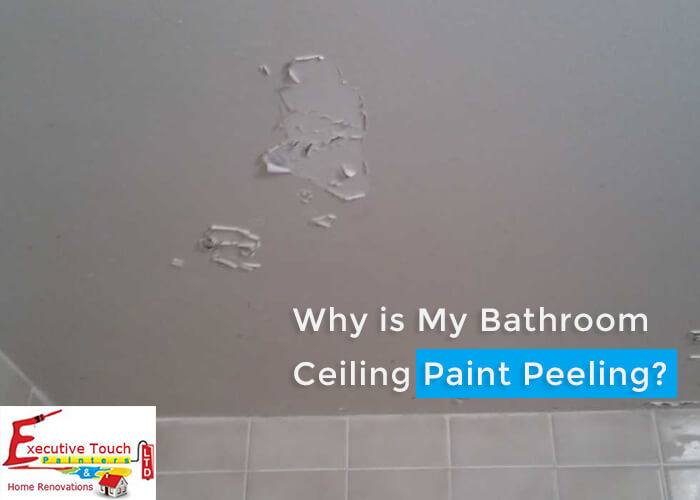
Peeling of paint is a common problem, particularly in areas where there is a lot of moisture, such as a Bathroom or Kitchen. Peeling is unsightly, but more importantly, it allows the decay of the surface. Over time, moisture can destroy walls and ceilings, so it is essential to address the problem as quickly and thoroughly as possible. The problem can occur at any time after painting, maybe after some days or years.
Peeling occurs when moisture enters between the paint layer and the surface underneath. To stop the process, you have to seal the surface and prevent the moisture from coming.
Water causes the bathroom paint to get detached from the surface, resulting in bulging, cracking and peeling. The water can enter the surfaces through roof leakages and also be the result of permeable walls allowing water to penetrate into the walls.
High moisture causes a build-up of moisture on walls which heads to the blistering and bulging of the coatings. The result is cracking and splitting of the layers. On the other hand, condensation causes dampness which favors the increase of mold and fungus.
For paint to stick properly, the surfaces are to be coated with primer adequately. If applied on uneven or non-primed walls, the color gets blistered and peels off. So the preparation of the surface is most important.
High temperatures make the paint to dry quickly and does not allow it to form a bond with the surface. On the other hand, intense sunlight makes oil paints fragile and vulnerable to cracking. Both latex and elastic paints expand and contract when exposed to the sunlight, weakening their adhesive bonds.
Some paints do not go well with some types of surfaces. Oil paints do not go well with concrete and galvanized steel, resulting in damages. New or poorly cured wood also prevent adhesion. Flat or shining surfaces also have compatibility problems with some paints. Mechanical adhesion is hard to form on these surfaces, and any color applied to them flake off immediately. Special care is to be taken while preparing the popcorn ceiling for painting.
Some paints do not bond with each other. Oil-based paints do not bond with latex based, and alkyd paints cannot bond with latex paints as well. Blistering occurs by applying both the colors on the same surface.
If too many layers are attached to a surface, the paint becomes heavy and can end up falling off. If there are no firm adhesive bonds to support the weight of the layers, the coating falls off immediately.
Poor quality paints do not have the right adhesion property. The poor adhesion does not allow for bonding with the surfaces and peeling occurs. Low sticking property is also the main reason for blistering.
Some paints are designed for a particular surface only like there are different paints for wooden surfaces, metallic, concrete and plastic surfaces. The primer is also essential for the paint to stick to the surface. There are specific primers for specific surfaces also. Therefore, using a wrong primer and wrong paint can also lead to the peeling problem.
While purchasing paint for your house, be sure to see the expiry date. If you use expired tint on the surfaces, then there are fewer chances that the paint sticks to the walls, leading to peeling.
There is a most chance that the paint gets peeled off when a corrosive metal or substances get in contact. The corrosive materials form blisters and bubbles on the paint surface. Good examples of these substances are acids used for cleaning bathrooms.
Applying thin layers of paint on the surfaces also leads to peeling of the paint. Use of wrong brushes fails to create a strong between tint and the surface. Lack of reliable bond creates cracks, blisters and peeling on the surfaces.
Extreme dry conditions also cause the paint to peel off from the surfaces. Dry situations do not allow the paint to form a stable adhesive bond with the surfaces.
With time, the cohesive bonds of a coat become stronger than the adhesive bonds and cause the layers to detach from the surface. Old paints lose bond strength and become brittle with time and subject them to cracking and chipping.
Kitchen or Bathroom ceiling paint peeling is a common problem in every house. Now that you have known all the reasons that are causing your paint to peel, crack and bubble, you learned the importance of avoiding this in your home or property.
Let our experts at Executive Touch Painters take the risk of you and make your bathroom or kitchen ceiling in Toronto to stop peeling. Contact us via online for a free estimate now! Or call us at 416-410-0164 for more assistance.